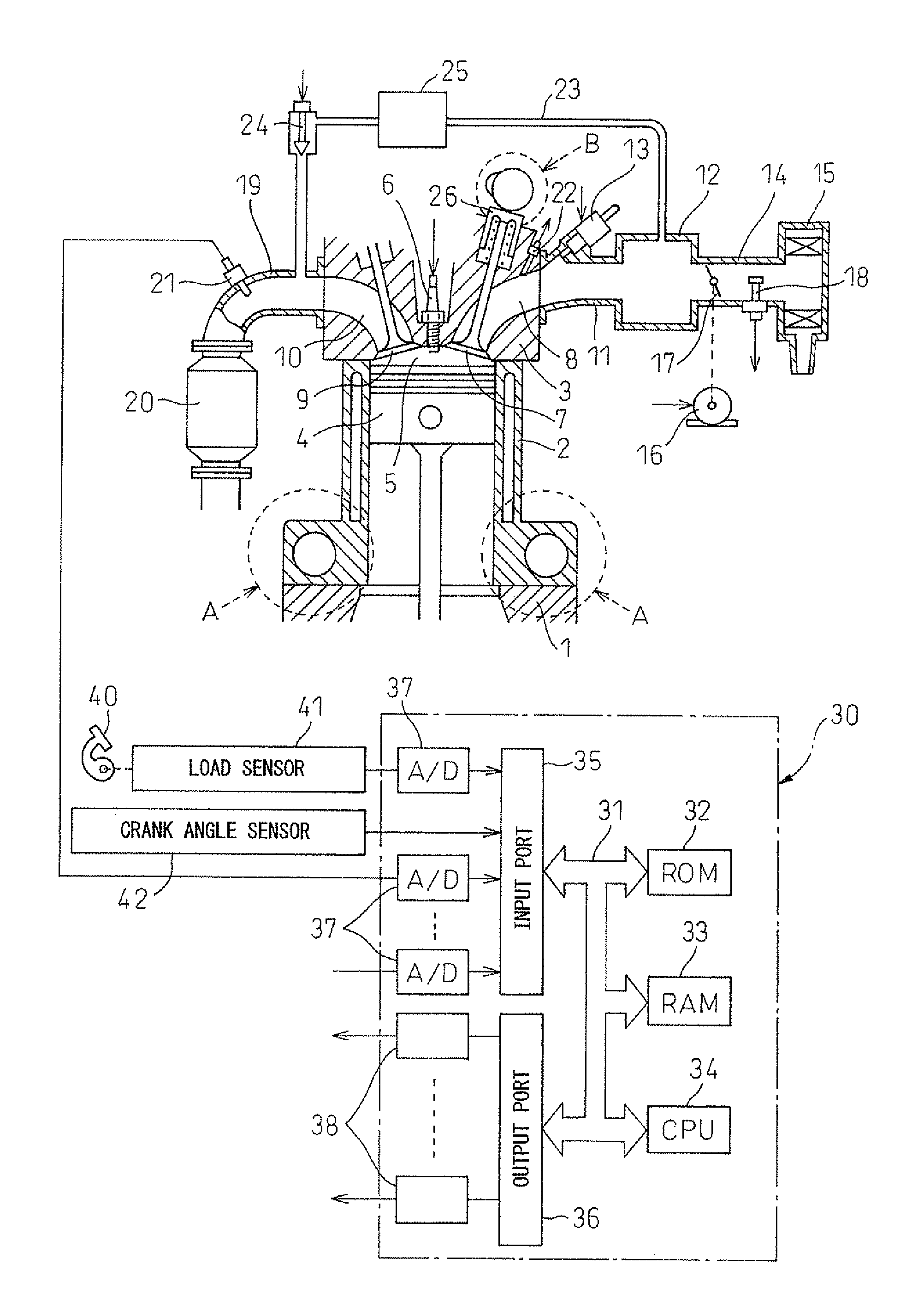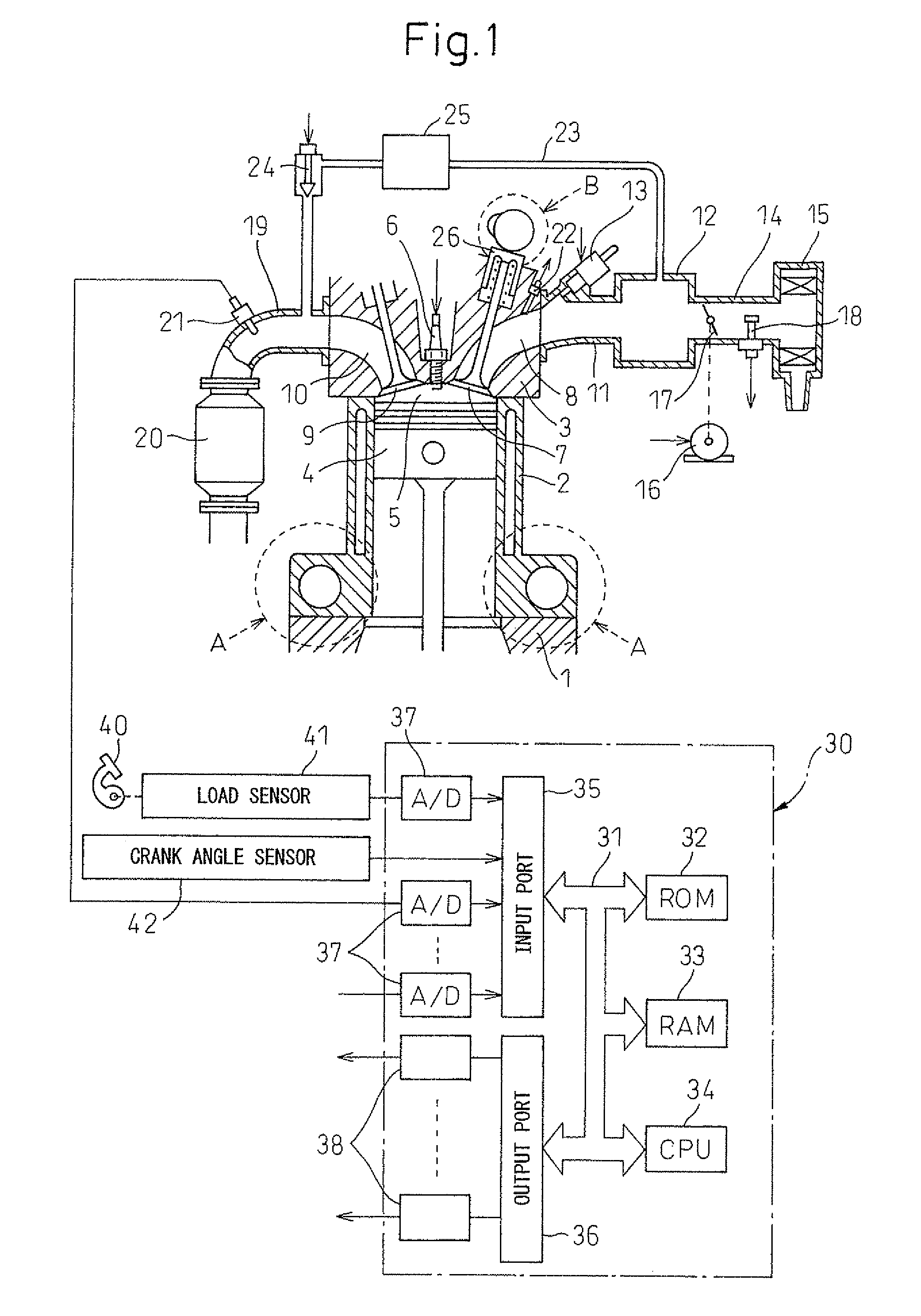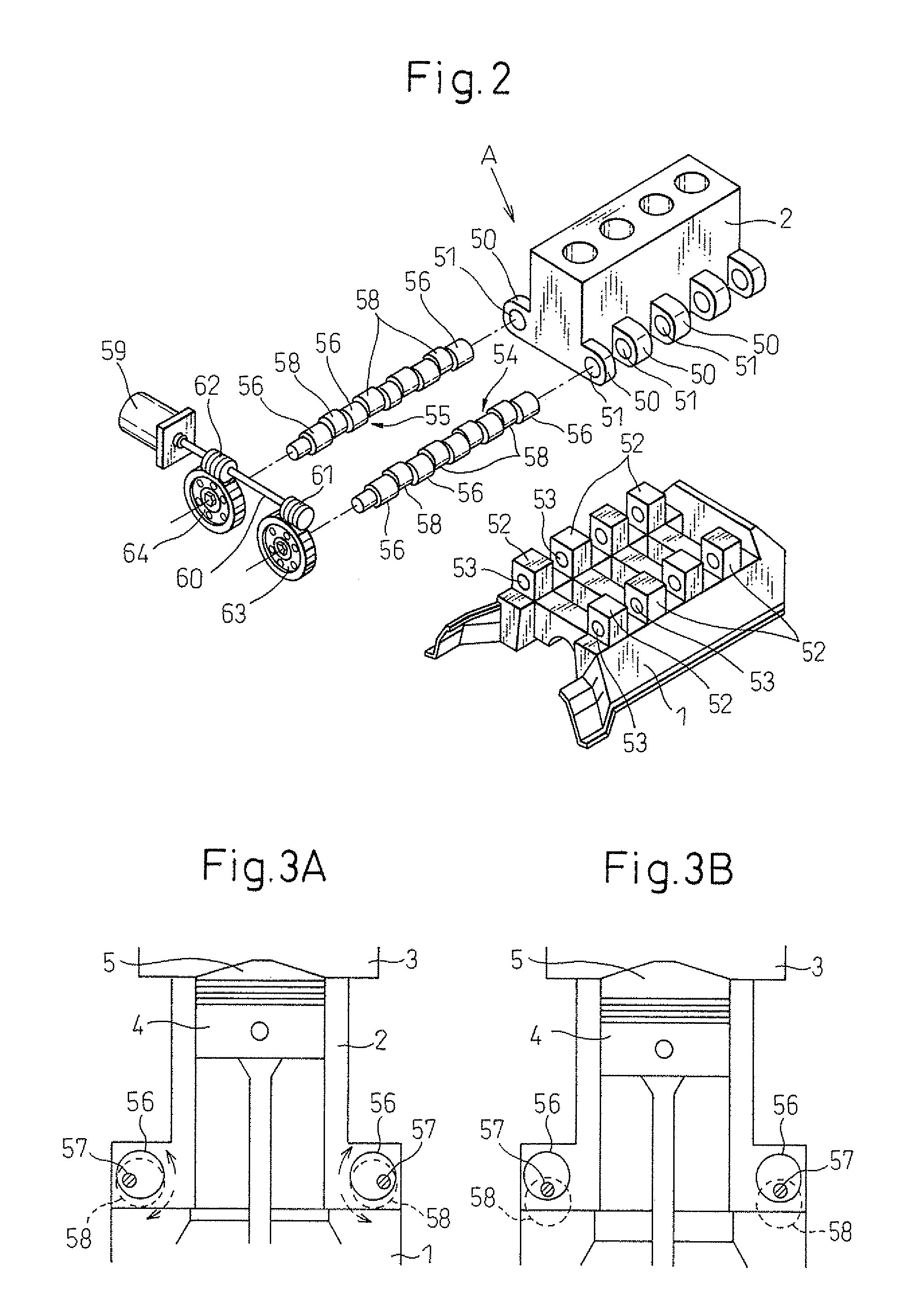Spark ignition type internal combustion engine
a technology of internal combustion engine and spark ignition, which is applied in the direction of machines/engines, electrical control, output power, etc., can solve the problems of extremely large blowback of intake gas and extremely large blowback strength of intake gas
- Summary
- Abstract
- Description
- Claims
- Application Information
AI Technical Summary
Benefits of technology
Problems solved by technology
Method used
Image
Examples
first embodiment
[0123]FIG. 14 is a flowchart showing of a control routine of the operational control of the present invention. As shown in FIG. 14, first, at step S11, the outputs of the load sensor 41 and the crank angle sensor 42 are used as the basis to detect the engine load L and engine speed Ne. Next, at step S12, the output of the wall surface temperature sensor 22 which detects the intake system wall surface temperature is used as to basis to detect the intake system wall surface temperature Ts. At step S13, it is judged if the intake system wall surface temperature Ts which is detected at step S12 is lower than a warmup judgment temperature Ts1. The warmup judgment temperature Ts1 is the minimum temperature of the intake system wall surface when the internal combustion engine finishes warming up. At the time of engine cold start, at step S13, it is judged that the intake system wall surface temperature Ts is lower than the warmup judgment temperature Ts1, then the routine proceeds to step ...
second embodiment
[0147]FIG. 18 and FIG. 19 are flowcharts of a control routine of the operational control of the present invention. Steps S31 to S33 and S41 to S43 of FIG. 18 and FIG. 19 are similar to steps S11 to S13 and S18 to S20 of FIG. 14, so explanations are omitted.
[0148]At step S34 of FIG. 18, the engine load L, engine speed Ne, etc. which were detected at step S31 are used as the basis to calculate the target closing timing tivc of the intake valve 7 by using a map etc. Next, at step S35, the intake system wall surface temperature Ts which was detected at step S32 was used as the basis to calculate the reference retarded guard timing givc of the closing of the intake valve using the map etc. shown by the solid line in FIG. 15. Next, at step S36, the engine speed Ne which was detected at step S31 is used as the basis to calculate the engine speed correction coefficient kne using a map such as shown in FIG. 16A, the engine load L which was detected at step S31 was used as the basis to calcul...
PUM
 Login to View More
Login to View More Abstract
Description
Claims
Application Information
 Login to View More
Login to View More - R&D
- Intellectual Property
- Life Sciences
- Materials
- Tech Scout
- Unparalleled Data Quality
- Higher Quality Content
- 60% Fewer Hallucinations
Browse by: Latest US Patents, China's latest patents, Technical Efficacy Thesaurus, Application Domain, Technology Topic, Popular Technical Reports.
© 2025 PatSnap. All rights reserved.Legal|Privacy policy|Modern Slavery Act Transparency Statement|Sitemap|About US| Contact US: help@patsnap.com



